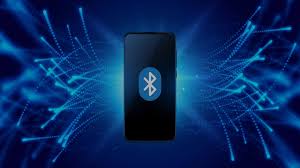Blog Credit: Trupti Thakur
Image Courtesy: Google
Blue Smack Attack in Wireless Networks
Blue smacking is one of the older types of attacks against the protocol. In our investigation of this attack, you’ll find that it’s a variant of a common attack called denial of service against networks, devices, and applications. In short, when we perform a Blue Smack attack, we perform a specially crafted package that can render a device unusable. This attack works by transmitting packets that exceed the maximum packet size available on the Bluetooth device. The end result is that the device is unable to process the packet and the target becomes a denial of service victim. This attack is a variation of the popular Death’s Flat attack.
Blue Smack Attack:
- Blue Smack is used to target networks protected by WPA2 (Wi-Fi Protected Access II) or WPA- PSK (TKIP with a pre-shared key) and uses multiple attack vectors.
- The first and original Blue Smack attack vector is used to launch what is known as a “handshake” attack against vulnerable access points.
- A handshake is a process where a device attempts to connect to another device in order for them to communicate. As this is one of the most frequent connection processes of a Wi-Fi network, the fact that it was successfully breached means that users are highly at risk of being attacked by malicious actors on public Wi-Fi networks.
- The exploit was first seen in a mass attack that targeted Access Points at airports, cafés, and other public spaces around the world.
- It was later found in Greece and India and eventually became more prevalent in Israel, where it was used as part of a multi-vector attack against Subway Wi-Fi networks. The attacks targeted multiple devices connected to Subway WiFi networks, with many being compromised and used as a part of a botnet in order to infect users with malicious payloads.
Key Points:
- The interesting fact about this attack is that it does not require the attacker to be physically present within the same Wi-Fi network as the victim or near any point of entry for gaining access to the network itself.
- It can also be used to attack individual devices on the same network. As just one device can act as an access point for any other device within range, victims would not necessarily be able to identify the source of the attack that lead to the breach.
- It is also possible to cause physical harm by compromising autonomous vehicle systems, which rely heavily on Wi-Fi networks for communication.
- Because WPA2 has been used since 2004 it is highly likely that most networks today are still using this type of encryption, making it hard for organizations with aging infrastructure to upgrade in order to protect themselves from this attack vector.
Procedure:
- Hackers first use standard tools such as l2ping that come with the Linux Bluexutils package.
- The I2ping tool also allows hackers to specify the packet length using several commands. As a result, Bluetooth-enabled devices are overwhelmed by the malicious demands of hackers, and victims are unable to operate the device.
- Attack atlas can interfere with the normal operation of the victim’s device and even affect the performance of the device.
Countermeasures:
- Turn off Bluetooth when you are not using it.
- Do not save the permanent pairing PIN code on your device.
- Turn off Bluetooth in public places such as restaurants, shops, airports, malls, and train stations.
- If something goes wrong with the device, the user can switch to another location to avoid this type of attack.
- If you are using Bluetooth, set the device to stealth mode or undetectable mode
A sort of wireless hacking technique called blue smacking uses flaws in Bluetooth-enabled devices to provide an attacker unrestricted access to a target device’s data. Depending on the objectives of the attacker and the device they are targeting, Bluebugging can have a variety of repercussions. The following are some possible outcomes of blue smacking:
- Unauthorized access to data: Bluebugging can allow an attacker to access a victim’s personal data, such as contacts, messages, emails, and other sensitive information.
- Control of the device: In some cases, an attacker may be able to take control of a victim’s device remotely, allowing them to make calls, send messages, or perform other actions on the device.
- Spread of malware: Attackers can use Bluebugging as a means of spreading malware or other malicious software to a victim’s device, which can lead to further data theft or system compromise.
- Financial loss: In some cases, blue bugging attacks may be used to steal financial information, such as credit card numbers or banking credentials, which can lead to financial losses for the victim.
- Privacy violations: Bluebugging can result in serious privacy violations, as attackers may be able to gain access to highly sensitive information, such as medical records or legal documents.
Wireless network usage has grown significantly during the past several years. Wireless networks have a lot of benefits, but they can also be attacked by different security risks. The BlueSmack assault is one such danger.
A Denial of Service (DoS) assault that targets Bluetooth-enabled devices is known as the BlueSmack attack. The attack includes flooding the victim device with many corrupted packets, which causes the device to freeze or crash. The assault takes its name from the well-known Smurf attack, which functions similarly.
The BlueSmack attack takes advantage of a Bluetooth protocol flaw that enables an attacker to transmit plenty of unauthenticated packets to the target device. Simple tools, such as the “bluesmack” script, which is publicly accessible online, can be used to attack this issue.
153.1K
AI Boom Is About Cerebral Valley: Y Combinator CEO
A BlueSmack strike has the potential to have a big impact. Data loss or service disruption may occur as a result of the victim’s device becoming unresponsive or collapsing. In rare circumstances, the assault might leave the target device permanently damaged.
It is crucial to adopt a number of preventative measures to guard against BlueSmack assaults. Disabling Bluetooth while not in use is one of the most efficient techniques to stop a BlueSmack assault. This might deter attackers from ever targeting your device. While using Bluetooth, it’s critical to make sure your device has the most recent security updates.
To further prevent unwanted access to your device, it is advised to utilize strong authentication methods like passwords or PINs. Also, it is crucial to exercise caution while connecting to unidentified devices since they could have been hacked and put to use as an attack gateway.
Network administrators can also take action to protect their networks from BlueSmack attacks. Implementing firewalls, intrusion detection systems, and traffic monitoring tools may be part of this. Network administrators can also inform users about the dangers of Bluetooth-enabled devices and offer useful recommendations.
The BlueSmack assault poses a significant security risk to wireless networks, to sum up. Although if the attack has the potential to do substantial harm, it may be avoided by following the necessary safety measures. Users may defend themselves against BlueSmack attacks by turning off Bluetooth when not in use, utilizing robust authentication methods, and exercising caution while connecting to unidentified devices. By installing security measures and informing their users, network administrators may help stop BlueSmacks assaults on their networks.
Effects of BlueSmack Attack on Wireless Networks
Targeting Bluetooth-enabled devices, the BlueSmack attack is a sort of Denial of Service (DoS) assault. It entails flooding the target device’s Bluetooth stack with a lot of data packets, resulting in a crash or loss of functionality. The BlueSmack assault can have substantial consequences on wireless networks, including the following:
- Disruption of Bluetooth connectivity: BlueSmack attack can disrupt Bluetooth connectivity between devices by overwhelming the target device with a flood of data packets. This can lead to a loss of connectivity between devices and affect their ability to communicate with each other.
- Slow network performance: BlueSmack attack can cause a significant slowdown in network performance by consuming a large amount of bandwidth. This can affect the speed of data transfer and make the network less efficient.
- Device downtime: BlueSmack attack can cause the target device to crash or become unresponsive, leading to device downtime. This can have a significant impact on the productivity of the user and cause inconvenience.
- Security vulnerabilities: BlueSmack attacks can also create security vulnerabilities in the network by exposing it to malicious attacks. Once the network is compromised, attackers can gain access to sensitive data and compromise the security of the entire system.
How to prevent Bluesmack attacks?
Bluesmack attack is a type of denial-of-service (DoS) attack that targets Bluetooth-enabled devices. To prevent Bluesmack attacks in a wireless network, you can take the following steps:
- Disable Bluetooth: If you don’t need Bluetooth connectivity, you can disable it on your device. This will prevent attackers from exploiting Bluetooth vulnerabilities to launch Bluesmack attacks.
- Keep Bluetooth devices up-to-date: Make sure that your Bluetooth devices are updated with the latest firmware and security patches. This will help to prevent known vulnerabilities from being exploited.
- Use strong passwords: If your Bluetooth devices require a password to connect, make sure to use a strong and unique password. This will make it more difficult for attackers to guess or crack the password.
- Limit Bluetooth device visibility: Configure your Bluetooth devices to be discoverable only when necessary, and to require authorization before connecting. This will limit the number of devices that can connect to your device and reduce the risk of Bluesmack attacks.
- Use Bluetooth in secure environments: Avoid using Bluetooth in public places or other insecure environments where attackers can easily launch Bluesmack attacks. Use Bluetooth in secure environments or turn it off when you are not using it.
- Use Bluetooth with caution: Be cautious when using Bluetooth devices, especially when connecting to unknown devices or networks. Don’t accept connections from unknown devices or untrusted sources.
It’s important to note that Blue smacking is illegal in most countries, and victims of such attacks should report them to the appropriate authorities. To protect against Bluebugging, users can take steps such as keeping their Bluetooth turned off when not in use, using strong passwords and authentication methods, and installing security updates on their devices.
Blog By: Trupti Thakur

30
JunBlue Smacking
Jun 30, 2023Recent Blog
Quantum Gravity Gradiometer PathFinderApr 28, 2025
The TechKriti 2025Apr 26, 2025
India’s First Quantum Computing VillageApr 24, 2025
India’s Achievement In QKDApr 22, 2025
The V2G TechnologyApr 21, 2025




